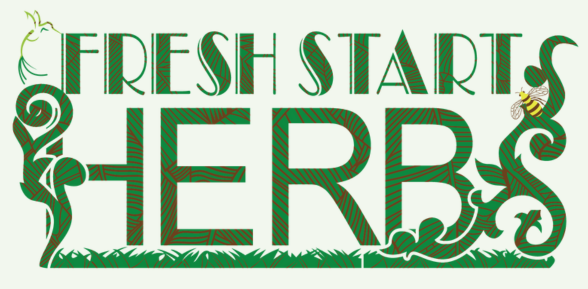Agastache -Herb of the year 2019
Planting for pollinators comes naturally to those who garden with herbs. Knowing where and when to gather herbs involves an intimate connection and first-hand knowledge of each plant’s natural lifecycle and reproductive habits. When observing a plant closely, you quickly become acquainted with the various insects and other wildlife that depend on the plant. Anise hyssop (Agastache foeniculum, a tall perennial plant with soft, anise-scented leaves and lavender-blue flower spikes appearing in late summer, is probably the agastache most familiar to herb gardeners.
Native to northern regions of the United States and most of Canada, anise hyssop is most often found growing wild in dry upland forest clearings and prairies. In spite of A. foeniculum’s many common names, giant blue hyssop, fragrant giant hyssop and lavender giant hyssop—the plant does not resemble hyssop (Hyssopus officinalis) or anise (Pimpinella anisum) yet they all have an anise-like flavor or fragrance. Another common species often found growing in American gardens is the Asian native, A. rugosa. According to herbalist Getrude Foster, “A seedsman was in the Korean War and brought the seed of the handsome plant he saw growing there back to this country. He called it ‘Anise Mint’ or ‘Korean Mint’ and it has been passed around under those names.” For many years these were the only two species readily available. Today though, gardeners have many species and showy hybrids that offer scent, color, taste and splendor
Gardeners frequently remark that native plants are messy and that they do not have the extra space to devote to them. Some native plants are quite aggressive, but others are easier to contain in the home landscape. However, few wildflowers are so well adapted to cultivation as anise hyssop. It is well behaved and decorative enough to grow among the flowers in your beds and borders. The size, shape, color, and bloom time of flowering plants all influence what types of pollinating insects will visit. Bees adore anise hyssop and prefer its nectar-rich blossoms over other plants available throughout late summer and fall.
So it comes as no surprise that one of its more obscure common names is “wonder honey plant.” Beekeepers like to grow it near their hives because it yields nectar all through the day instead of part of the day as many flowers do. Beekeepers introduced the plant to Europe for the light, fragrant honey it produces. All the giant hyssops are popular with honey bees, bumble bees, native bees, parasitic wasps, hummingbirds, butterflies, skippers, and moths. Pollinator Gardens are a recent concept, reminiscent of the Victory Gardens promoted by the government during World War I and II, intended to help cover food only this time, for insects.
ver time, as our needs change, so do common uses of plants; as such, lists of useful plants and herbs will vary from one generation to the next. Published in 1993, Steven Foster in Herbal Renaissance, Growing, Using & Understanding Herbs in the Modern World, describes anise hyssop as a friendly neighborhood herb and tasty tea plant with great economic potential. Today this resilient native is popular with garden designers seeking to bridge the gap between nature and cultivated gardens.
Anise hyssop is very easy to grow from seed sown directly in the ground in spring or transplants. It thrives in full sun and well-drained soil and can tolerate some drought. Plants self-sow readily, but undesired seedlings are easy to pull or transplant. Picked fresh from the garden, the leaves make a bracing and flavorful minty-anise tea, an unusual salad green, and it’s sometimes used as a substitute for French tarragon in culinary dishes. Fresh flowers add a sweet anise taste when chopped into fruit salads and desserts.
The dried flowers and leaves provide a beautiful fragrant ingredient in potpourri recipes, and it is fantastic in fresh flower arrangements. Native Americans used different parts of this aromatic herb for a variety of household and medicinal uses: in beverages and teas, as a sweetener and medicinally for coughs, colds and heart ailments. The flower heads were included in medicine bundles. The Cheyenne used an infusion of the leaves “ to correct dispirited hearts”
Most of us have learned to garden one plant at a time. If you are looking for an easy to grow native plant, give anise hyssop a try. It is an excellent choice for pollinator gardens, children’s gardens, cottage gardens, deer-resistant plantings, and cutting gardens. Anise hyssop is easily grown in containers to provide weeks of color on a deck or patio.






